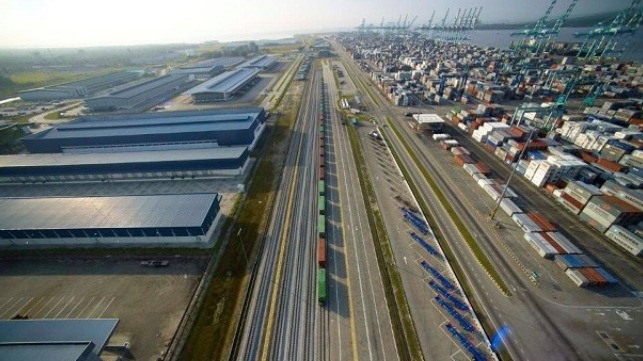
Published by Business Today, The Sun Daily & Biztech.asia, image from Business Today.
In Malaysia’s efforts to pursue becoming the widely touted ‘high-income’, ‘high-tech’, digitally-transformed nation to embrace the fourth industrial revolution (4IR), we have to address the huge white-elephant in the room: Malaysian student’s low rate of uptake in technical courses, and in courses related to science, technology, engineering, and mathematics (STEM).
This decline is not new. In May, education minister, Mohd Radzi Md Jidin noted that the ministry is aware of the rapid decline in the interest of STEM subjects which had been observed year-on-year and is trying to address the issue.
If the trend continues in this trajectory, it will cause a severe mismatch in the supply of STEM talents despite the need for STEM-related advancements and rapid development of the digital industry.
In the near-to-mid term, it is foreseeable that the issue would negatively impact the uptake and utilisation of the various supporting initiatives that promote not only the effective use of technologies, but its development and production.
Obviously, this reflects a poor (and decreasing) interest amongst Malaysia’s younger generation in fundamental fields that are crucial for a nation to thrive as it undergoes a digital transformation and embraces 4IR.
As mentioned by Prime Minister Tan Sri Muhyiddin Yassin on August 19 during the launching of the National Technology Innovation Sandbox – one of the key initiatives under the Short-Term Economic Recovery Plan (Penjana) – Malaysia needs to be a high-tech country to become a high-income nation.
To do so, we must address all parts of the ecosystem, particularly the foundation of an innovative and technologically advanced nation i.e. its people.
Innovation and technology are not just fancy words; they are a culture. The raw currency for the success of supporting initiatives are the high number of researchers, technology developers, innovators and start-up founders in relevant fields. The forgers of the raw materials to produce this valuable currency are the education system and the embedded culture.
As mentioned by Dr Mohd Radzi, “Education is a timeline, starting from primary, secondary to tertiary education.”
In the broader sense using a commercial analogy, this ‘timeline’ is part of a key component of the supply chain.
Both supply and demand are parts of the circular innovation/digital economy supply chain and one is justified to argue a higher focus on a particular portion. In view of the over-utilised ‘chicken-and-egg’ argument, it is important to acknowledge that both parts are crucial, but at the same time recognise that one part is clearly the foundation whilst the other is the support environment.
If the numbers of STEM talents, technocrats and innovators continue to be persistently low, Malaysia would get caught in the adopter trap. Indeed, a reasonable first step is to ensure Malaysia adopts the best technologies, but a more sustainable way is to eventually become a value-added user and better yet, a technology producer as well.
As indicated by the Prime Minister, history had shown that the strength of a country’s economy and military is contingent on its mastery of technology.
However, effective adoption is only the first part of mastery, and must not be confused with mere consumption.
From the perspective of the Digital Adoption Index (DAI) – a worldwide index that measures countries’ digital adoption amongst the people, government, and business – although the use of digital services such as e-commerce and internet banking is increasing, these numbers still remain relatively low, according to a BNM article in 2018.
Furthermore, we can take internet usage as a gross indicator to gauge where Malaysians are at, as a value-added ‘adopter’. The BNM article showed that the majority of internet usage in Malaysia is limited to the consumption of content rather than productive activities.
As an example, 81.2 percent of Malaysia’s internet users download media and play games (indicating a strong focus on entertainment), while an embarrassingly small percentage engage in productive activities such as professional networking (9.1 percent), content creation (11.8 percent) and learning from formal online courses (4.8 percent).
These are worrying statistics and we have to make a course-correction now in order to avoid a situation of “first-class infrastructure with third-world mentality”. Those days should be over by now.
Malaysia is very capable in coming up with the best initiatives to help promote the development of the necessary infrastructure and policies, but ensuring these initiatives would continuously be utilised, improved upon and create real value requires our education system to produce a sustainable supply of technocrats and innovators.
This means that Malaysia has to ensure that popularisation of STEM, ideas of innovation, and the technocratic-entrepreneurial spirit are inculcated from primary and secondary education. This is where interest to pursue related courses at the tertiary level is ‘organically’ grown.
Significant exposure to real-world applications at higher education level can further drive the passion in technology and innovation and in turn would assist in driving interest to pursue further research and/or the venturing into commercialisation.
It is at this stage of the ‘supply chain’ that Malaysia’s various support initiatives that promote both high-end research and innovation such as the recently launched NTIS would come in handy.
In the long run, a critical mass of experts in technology and the high number of successful technology companies would provide the much-needed self-sustaining feedback loop, which, from the funding perspective can come in the form of (but not limited to) private equity investments, grants, and technocrat ‘angel’ investors. A combination of healthy proportions of both government funds and private financing is also key to ensure a more sustainable innovation ecosystem.
Higher numbers of technology businesses may also contribute to increasing product off-take for new technology products and services. These complements and completes the circular supply chain of the technology/innovation ecosystem. Supply of innovators (push-factor) create more demand, and the increased demand (pull-factor) drives the production of more innovation and innovators.
Any forms of masterplans or national-level initiatives would be incomplete without a strong two-way linkage between ministries involved in both the support of talents and in the supply of talents. It is worth considering a new shift in policy framework where ALL parts of the society are put at the heart of digital transformation and IR 4.0.
Understandably, forging innovators and instilling new techno-centric mindset and culture is a monumental challenge and require a relatively longer time unlike shorter-term support-based initiatives.
Ahmad Ameen Mohd Kamal is Head of Science and Technology at EMIR Research, an independent think tank focused on strategic policy recommendations based on rigorous research.

